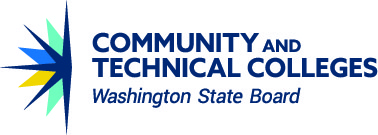Organizational Change Management (OCM) DRAFT
Organizational Change Management is a structured approach to transitioning individuals, teams, and organizations from a current state to a desired future state to achieve lasting benefits.
- Prepare for Change: Assess readiness, define strategy, and build a change team.
- Manage Change: Develop plans, engage stakeholders, and implement communication & training.
- Reinforce Change: Monitor adoption, celebrate wins, and adjust based on feedback.
- Leadership Alignment: Ensure leaders are visibly committed and aligned.
- Stakeholder Engagement: Identify and involve key stakeholders early.
- Communication Plan: Clear, consistent, and targeted messaging.
- Training & Support: Equip people with the skills and knowledge needed.
- Resistance Management: Identify sources of resistance and address them proactively.
- Measurement & Feedback: Track progress and adapt as needed.
There are many Organizational Change Management (OCM) methodologies, each with its own structure and terminology. However, they all share a common foundation: a human-centric approach to change.
Despite their differences, these models are built on similar core beliefs:
🔹 People First
Change is ultimately about individuals. Sustainable transformation happens when people are supported through the transition—emotionally, cognitively, and practically.
🔹 Clear Vision and Communication
A compelling and well-communicated vision helps people understand the “why” behind the change. Consistent, transparent communication reduces uncertainty and builds trust.
🔹 Leadership and Sponsorship
Successful change requires visible, active leadership. Leaders must champion the change, model desired behaviors, and provide the resources and support needed.
🔹 Stakeholder Engagement
Involving stakeholders early and often ensures their voices are heard, builds ownership, and helps identify potential resistance before it becomes a barrier.
Prosci's ADKAR Model: A goal-oriented model for individuals.
- Awareness: Acknowledging the need for change
- Desire: The Motivation to participate and support the change
- Knowledge: Understanding on how to change and what is expected
- Ability: The skills and behaviors to implement change
- Reinforcement: Sustaining the change
Kotter's 8-Step Change Model: A leadership-focused model for guiding large-scale organizational change.
- Create urgency: Establish a need for change.
- Form a powerful guiding coalition: Build a team to lead the change.
- Create a vision: Develop a clear vision for the future state.
- Communicate the vision: Spread the vision to gain buy in.
- Empower Broad based Action: Remove barriers to action.
- Generate short-term wins: Create visible successes.
- Consolidate Gains: Build on early wins.
- Anchor New approaches in the Culture: Embed the change in the organizations values.
William Bridges' Transition Model: Describes the emotional journey of individuals during change.
- Ending: Letting go of the old.
- The Neutral Zone: Navigating the period of transition.
- The New Beginning: Embracing and adapting to the new reality
Resources
Each college will be granted access to their own google sheet.
- Bates Technical College
- Bellevue College
- Bellingham Community College
In order to begin conversations with impacted stakeholders on your campus, we're providing you some basic communication templates to engage specific stakeholders in a conversation about specific changes and how they will be impacted. Below you will find a number of communication blocks that you can use as a launching point for reaching out to staff on your campus.
Stakeholder: XXX
Purpose: YYY
This PowerPoint Template is designed to help support you by:
- Developing partnerships on your campus
- Developing a template content and any additional information of value to your campus
- Defining your tools and material build process
- Analyzing business practice impacts and material updates
- Testing involvement and relevant scenarios


0 Comments
Add your comment